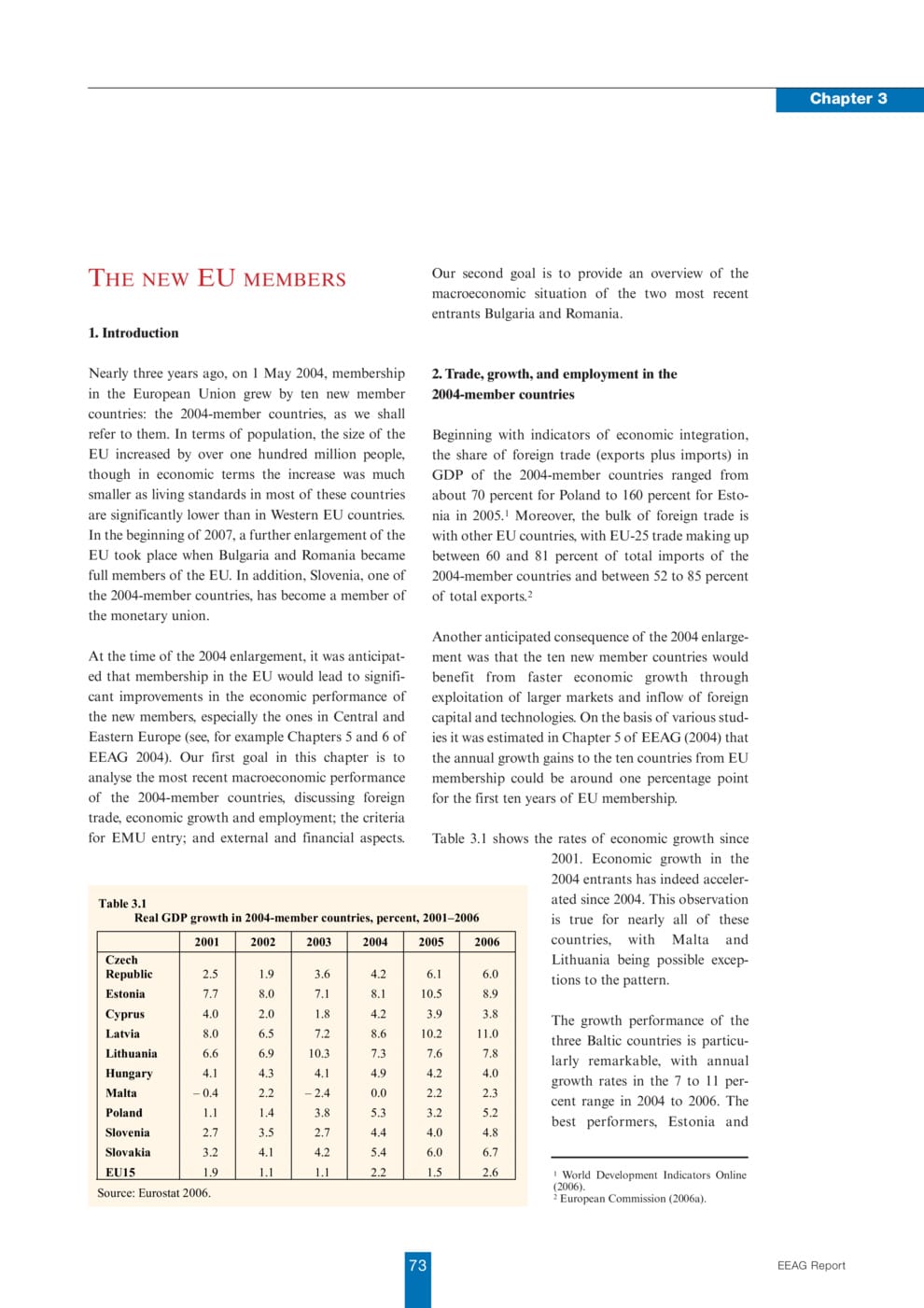Chapter 3: The new EU members
CESifo Group Munich, Munich, 2007
in: EEAG Report on the European Economy 2007, 73-81

This chapter examines how well the ten member states that entered the EU in 2004 have been doing. It is a follow-up of earlier extensive analyses in our 2004 report. The finding is that the growth performance of the EU-10 has been very good in general. The chapter warns about the dangers of keeping those countries that have entered the ERM II outside the monetary union and proposes a rebate with respect to the inflation criterion for joining the euro for fast-growing countries that are catching up with the old EU countries. The chapter also assesses the current economic situation of Bulgaria and Romania, who acceded to the EU on 1 January this year. Much of the European policy debate is about what economic model Europe should opt for. The issue is often cast as a choice between a market-liberal, Anglo-Saxon model, providing economic efficiency at the cost of low social protection, and a social European model, delivering equity but at a high cost in terms of efficiency.
Included in
EEAG Report on the European Economy 2007
CESifo Group Munich, Munich, 2007